Published 11 August 2017 ● Last Updated on 30 September 2020
Of all single-use plastic items, clingwrap is the most frustrating. Yes, I know plastic straws are also a contender for the number 1 stop – but we have the option to replace them with reusables, or refuse them altogether. And strong clean plastic bags can be reused as well. But clingfilm? You are literally stuck with no option but the trash can!
I started my plastic-reduction journey a few years ago, and by now it is second nature for me to carry a folded shopping bag in my handbag and I don’t recall the last time I purchased bottled water. I steadfastly refuse plastic straws (though ever so often forgetful staff hand it to me with the juice anyway!). And of course, I always carry my own grocery bags.
This time for #PlasticFreeJuly, I decided to take particular aim at the clingwrap use in my household, as it is not only a single-use item, it is also a non-recyclable in Singapore. My plan of action – go cold turkey!
If you’re reading thus far, I guess you too are wondering if I managed to succeed in my resolve… So how easy or tough was it? And who won in Me versus Clingwrap? Let me begin with the good news:
Venue 1 – Homeground: I’m the winner!
To be honest, this was easy. I put my clingwrap away from the drawer into an unreachable high kitchen shelf, and that was all it took to break the habit. Like a packet of chips which is easiest to avoid if it not purchased at all, the clingwrap is a bad habit that is easily discarded when the box goes missing! I was forced to look for alternatives, and I found many – my collection of steel plates, plastic lids, glass lids, even cloth lids – all came into play to bridge the gap.
Here’s a ready reckoner of alternatives to clingwrap that you probably have lying around the house too. And if you don’t, the list may direct you into the direction of things worth investing in!
Small plates
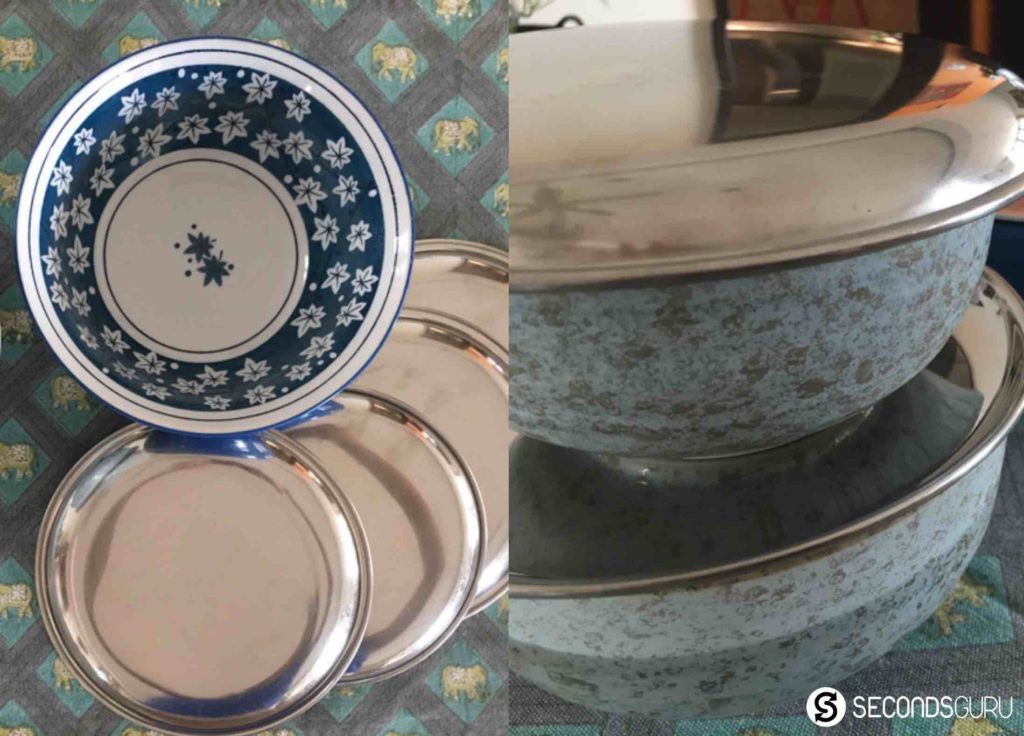
This is as old school as it gets. It’s what my mom did to cover up those leftovers when I was a kid – just added a plate on top – and now I follow her footsteps. Luckily, I have quite a few small-sized steel plates in my kitchen. They’ve always been handy to hold peels as I prep the food, or park spatulas as I cook. Now, since they are strong, I find them especially useful to stack up stuff in a bursting fridge shelf.
Cloth covers
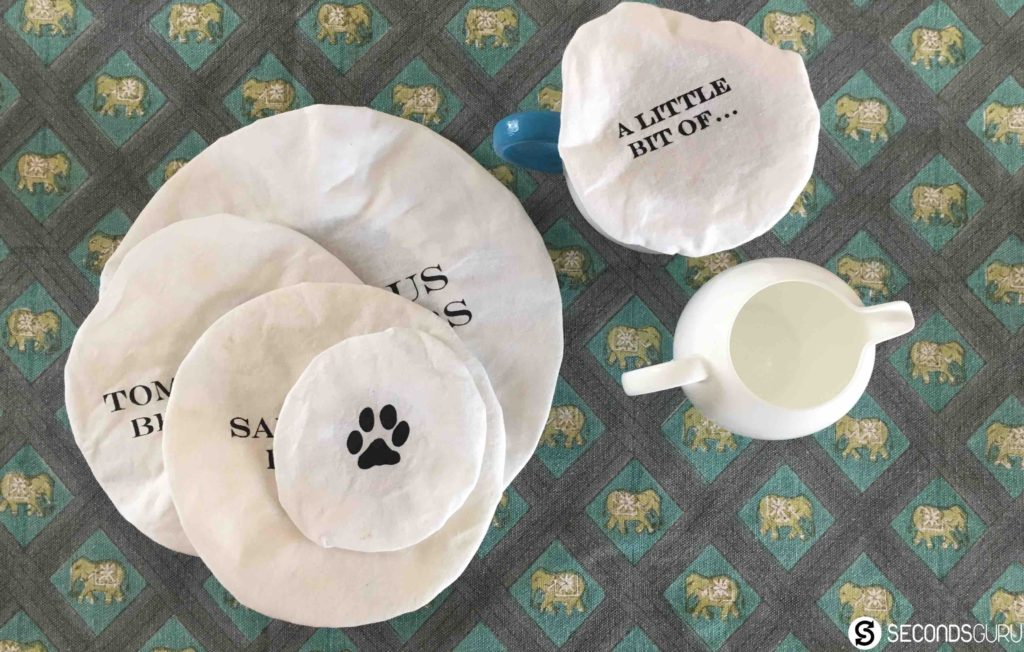
I purchased a set of these at an eco-fair from Neis Haus a while back, and I use them not just for food, but also for liquids. The elastic on the side makes them useful for irregularly sized bowls that my plates can’t cover – such as these ceramic pourers!
Muslin cloth
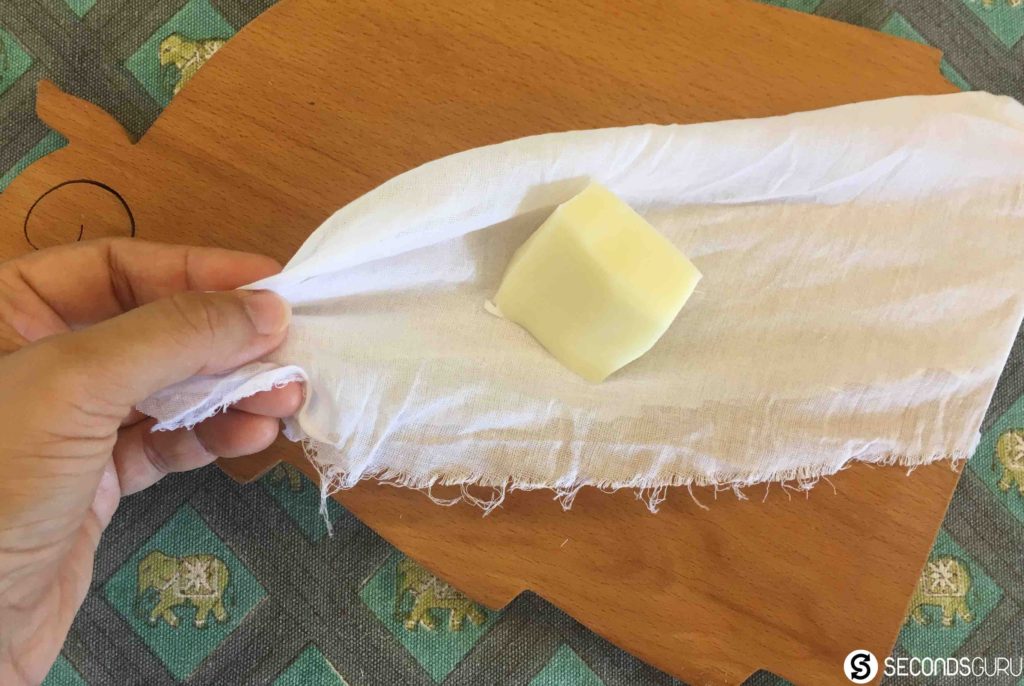
I’ve always stored cheese in clingwrap, under the assumption that it must be kept tightly wrapped to avoid sweating and mould. So when I had to leave clingwrap, I first turned to google to figure out alternatives. Voila! Turns out muslin is actually a better alternative, as it lets the cheese breathe – this option worked perfectly for me. If you have a strong-smelling cheese, you could additionally put the muslin-wrapped brick in a closed container.
Update: Over time, I have changed trialled-and-errored my way into what works best for cheese longevity and freshness! Scroll down to beeswax wraps for more 🙂
As an Indian household, my other challenge was to find a suitable cover for kneaded dough. We regularly cook rotis/chapattis, so there is always spare dough in the fridge – clingwrap is great at delaying the hardening of the outer surface (as it beats contact with air). For this again, muslin worked well – just dampen it first before wrapping up the extra dough.
And finally, muslin – or frankly any cotton cloth napkin – is great for storing old sandwiches, or packing fresh ones into the lunchbox!
Wondering where to get this magic cloth? I got my plain whites from India, and I reckon textile stores should carry some. For ease, you can find it in various Japanese stores – look for tenugui. For an even softer muslin, look up swaddling cloths at Mothercare – pricey but gorgeous!
Miscellaneous lids
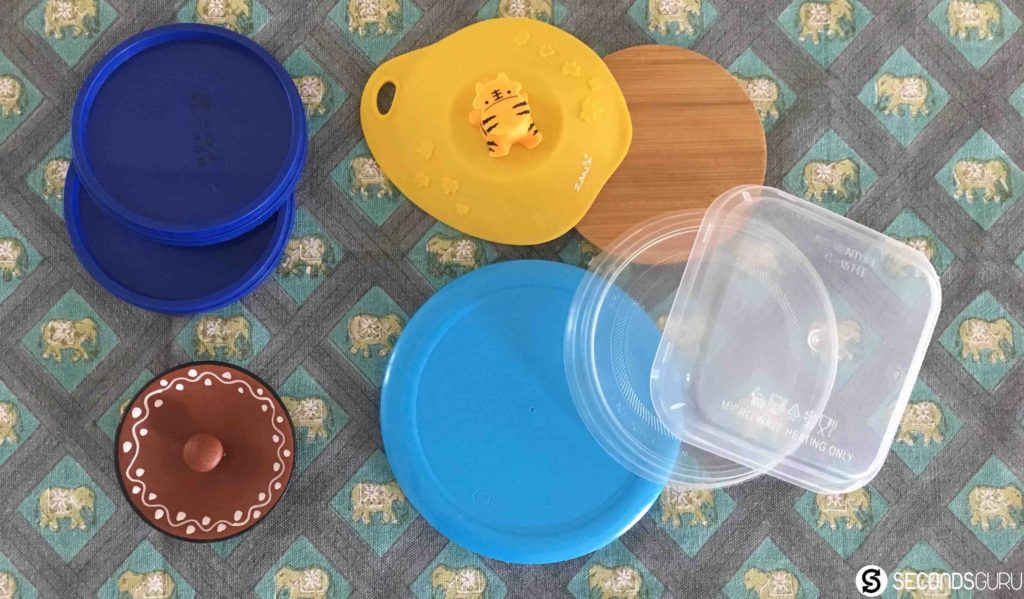
All kitchen drawers store lids that are unintentionally collected over the years, and mine is no exception: the ceramic bowl that broke and left behind a lid, the disposable container cover from the chicken rice I tapao-ed, silicone covers that belong to tea cups, metal tops of jam jars… there is more than enough to make up for a missing clingwrap on any occasion!
Lidded containers
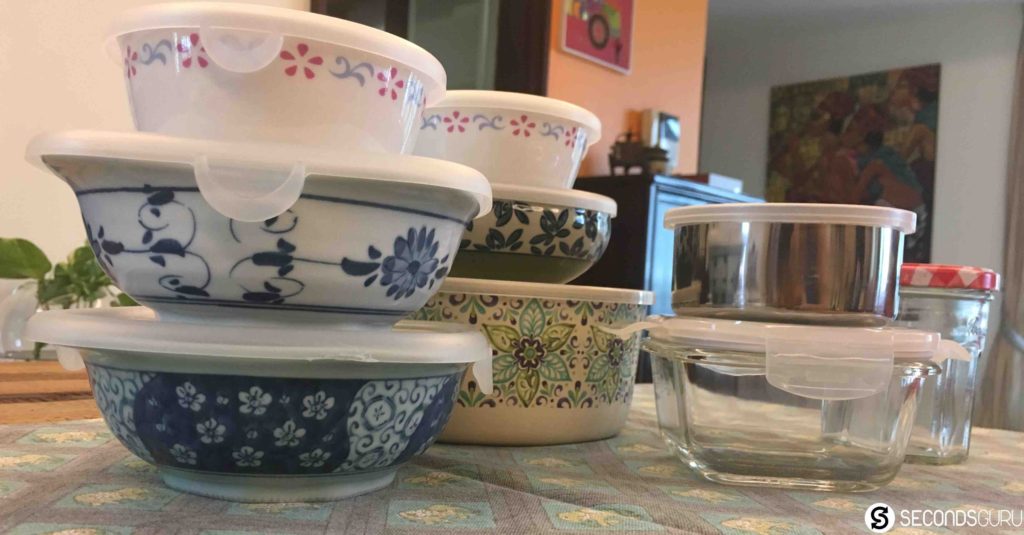
I invested in some Daiso steel containers that I have grown to love already – great to store half-onions and quarter-tomatoes and what-not in separate units and stack them up in the fridge!
Separately, I invested in some lovely lidded ceramics in various sizes – this way, the “serveware” doubles up as “storage”, and can be used in the microwave too. This reduces my washing load, cleanup load, and clingwrap load all in the same shot! If you would like to pick up something similar, again it is the Japanese that lead the way – I got my finds at Takashimaya and iSetan.
Beeswax wraps
I am adding beeswax wrap to this list as it is another option worth exploring – but I didn’t use this as I’m not a fan of its sticky texture. If you really need an airtight covering – this seems to be a good option. For me, it helps that I grew up in a time and in a household where “airtightness” was not so sacrosanct as it is today. My mom used to put cut veggies in a bowl and cover them up, not thinking so much that half a cucumber had to be tightly bound to live longer. Returning to this mindset means I just need lesser things to cover up!
Update: To start off, I was not a fan of its sticky texture. But used in the fridge as an airtight covering – of wow – this is truly a lifesaver when it comes to cheese such as Brie which are quick to spoil!
…And now confession time – I did face my nemesis – and that was the raw meat, where the airtightness idea wouldn’t loosen its hold on my mind. We aren’t big meat eaters in our household, and so, for instance, 1 single salmon is cut into quarters before we freeze it for future piece-wise use. If I don’t cut up the salmon, I’d have to defrost it all and end up with too large a portion for lunch. If I cascade the cut salmon together in a box, the pieces would freeze and stick together. Clingwrap is great for individually packing the salmon chunks… and I ended up doing just that 🙁
In hindsight, I could have wrapped it in muslin and stored in a box in the freezer – but still, the idea of reusing cloth that stores meat doesn’t seem the best idea. Perhaps I could have used baking paper – but on further research, it seems baking sheets aren’t plastic free [they have a silicone coating]. Perhaps I should go ahead with foil? At least the metal can be recovered after incineration (that’s the process that Singapore’s waste disposal goes through]. Anyone out there with suggestions? I’d love to know what you do -please leave a comment below!
Overall though, I think I managed the pledge fairly at home ground. Apart from the one time when I lost to salmon, it was easier than I expected!
Update: First things first, I’ve greatly cut down on the meat we buy. Here’s why. And the salmon is now stored in baking parchment by If You Care which is compostible (which is great if you compost at home!) and also FSC certified.
Venue 2 – Supermarket: I lose, shamefacedly!
Supermarkets frustrated me time and again throughout July. And even I frustrated myself when I, so used to picking certain foods in familiar aisles, ended up adding cling-wrapped food to my trolley on an auto-pilot mode of shopping. The first shopping trip of July, I made several errors – it was only while removing the packaging that I realised how I’d overlooked the clingfilms – on cabbages, mushrooms, lime,… and yes, the cut of salmon! Clingfilm is so ubiquitous that unless one makes a special, concentrated effort to avoid it, it will certainly find a way into the shopping bag.
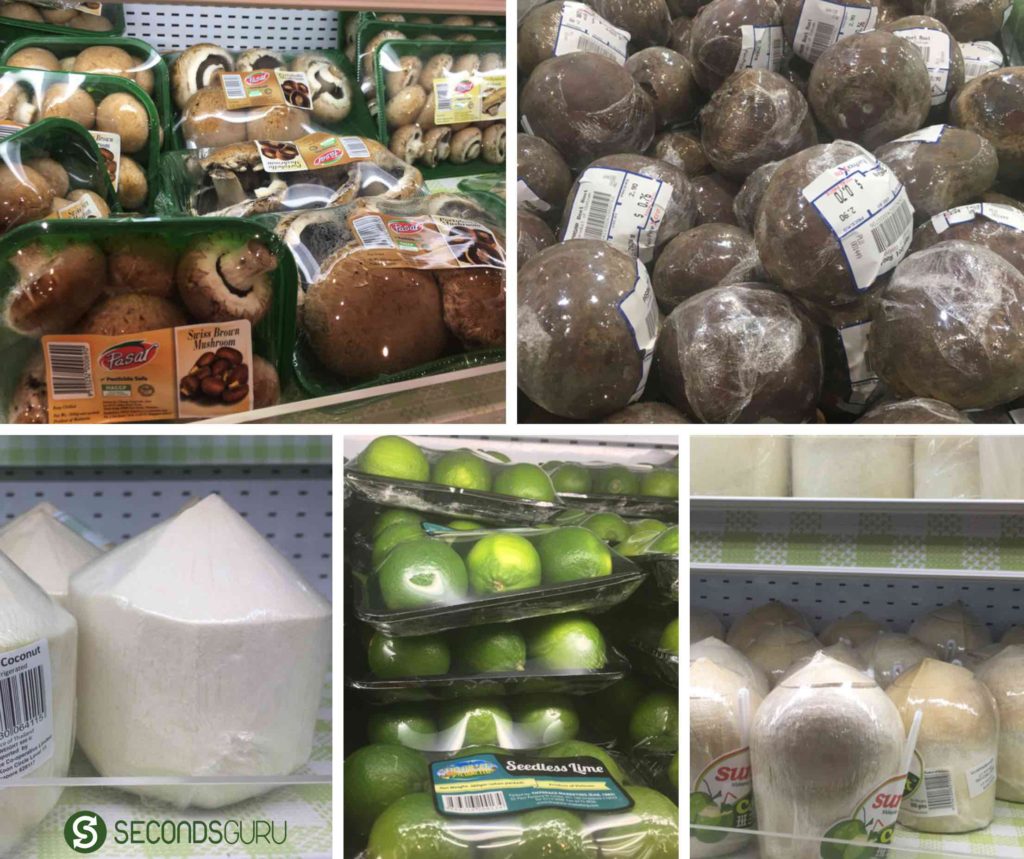
On my second shopping trip (and thereafter) I was more mindful and strong-willed. And that’s when I realised the paucity of options for a shopper like me – wanting to avoid plastic, but without the time to add a wet-market visit into my schedule. Already I juggle between NTUC for staples, Cold Storage for meat, a local Indian store for niche items and iHerb for superfoods/organics. If I have to add another market to my list, I need to start giving up on work!
Update: This frustration later led to this fabulous list of zero waste stores in Singapore on Secondsguru. Bookmark it!
So instead of giving up on work, I simply gave up on buying cut fruit, minced pork, sausages and chicken all through July. I have no idea where and how to buy these conveniently without packaging in small quantities.
Other times I gave up on the pledge – and purchased goods with their clingfilm packaging because I didn’t have the bandwidth to go hunting for a cling-film free cabbage and mushroom!
Clearly, I don’t have a long term solution (yet) when it comes to stopping out-of-home clingwrap use. But given the ease with which I could manage in-house clingwrap use – I do believe that producers and supermarkets CAN and SHOULD do a much better job in avoiding styrofoams and clingwraps! Consumer action is NOT enough to drive single-use plastic to zero – we need supermarkets, shops, suppliers to play a part in the solution.
And perhaps we can move them by starting to play our part in the solution – our part as CONSUMERS asking for package-free foods; and our part as CITIZENS demanding reduced packaging waste.
This article was updated on July 6, 2020
Microplastic Mayhem | The tiny pollutant that has a big impact
Buying without packaging? These shops make zero waste possible in Singapore



Anjana Bhattacharya
31 October 2017Coming back to say a big- thanks on behalf of a cheese enthusiast @home & me ! We have had trouble storing cheese for the longest time. Had to throw away portions of carefully picked cheese countless times either due to fungus growth or mould.
Then came your article last August.
What worked is – quick dab with a ‘piece of magic cotton cloth’ (that description is just spot on! my source was dad’s unused dhoti , put to good use) & tight wrap with beeswax paper (from Neishaus, thanks for the pointer)
Anuja Byotra
31 October 2017Thanks for the up-vote and trying out the suggestion Anjana 🙂 It’s so encouraging to know that my experiments are a help to anyone!!
Mamta
16 August 2017How about cupcake or muffin baking trays with lids, for freezing raw meat in easy to use serving sizes? Or if you want something smaller or larger, then ramekins with lids. You get all sizes. I am taking this idea from our freezing of our pet dog’s food in smaller serving sizes, to avoid having to defrost the whole lot.
Very good post, as always, Anuja, with plenty of useful information backed by solid research & experimentation. Thank you ?.
Anuja Byotra
16 August 2017Thanks for the suggestions Mamta – your post reminded me of my long forgotten single-serve jello cups, will put them to use for freezing meat now! Thanks also for following our articles, reader such as you are our biggest encouragement 🙂